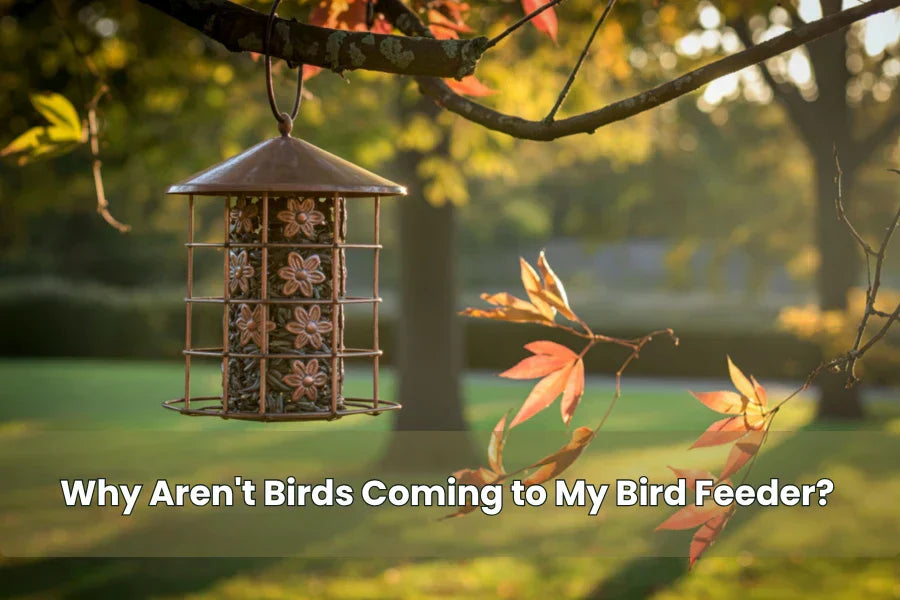Blue Jays Love These More Than Peanuts!
The Blue Jay is one of North America's most familiar and enigmatic birds. The bird has beautiful shades of blue, is very intelligent, and has easy-to-differentiate calls, making it one of the most sought-after birds by birders.
People mostly think that they eat peanuts only. Still, these intelligent birds have a vast and varied diet and an exciting pattern of behaviors regarding hibernation and preparation for the long winter. This article reviews how Blue Jays forage, what they eat, and why they make choices in foods that they do.
Preparing For Winter: Strategic Food Caching
Winter is a cold time, and Blue Jays do not take it easy, but they are swamped, ensuring they make it through those months. Unlike some bird species that fly to warmer regions when it is colder, Blue Jays are permanent fixtures in their area even during the winter; hence, they must protect their food sources during these chilly periods.
Caching or storing food is one of these animals' most remarkable behaviors during such a period. Blue Jays are known to forage for different seeds, nuts, and other small insects and store them in different hoards to carry later.
It is not random when it comes to caching behavior. These birds are bright when selecting their hide-and-seek zones; they usually ensure they get to areas where other animals need help finding their hidden treasures.
They are generally found under the leaves, in the spaces between the trees' barks, and sometimes even buried in the soil. They can do this because they have a solid memory to recall areas where they stashed these foods even after months.
Winter Diet: What Blue Jays Eat When It's Cold
During the winter, especially when the natural sources of food are scarce, Blue Jays depend on the food stored by them. However, they also search for what is left over when it is there or the available scraps.
The winter diet is also very flexible, which is perhaps the result of the bird's versatility in terms of the habitats that it inhabits. During the colder months, their food mainly consists of nuts and seeds, which are essential in providing fats and proteins that enable them to continue their daily activities.
Another food source that Blue Jays feed on includes acorns. This is because the trees that produce acorns are available in most of the forests where the birds inhabit. These nuts contain fats and, therefore, provide energy to our bodies.
Besides acorns, bluebirds also consume other kinds of nuts, starting with hazelnuts, followed by beechnuts and chestnuts if they can find them. These nuts are only sometimes available in the suburban feeders, but being a Blue Bird Jay, they readily accept them wherever they are available.
A Preference For Certain Nuts: Beyond Peanuts
Although peanuts are among people's favorite food items to feed the Blue Jays, these birds also prefer other nuts. Acorns are among many people's favorite foods because of their availability and nutritional value.
These birds are among the only birds that can tame the external shells of acorns, and although the kernels themselves are rich in nutrients, Jays manage to eat them only by cracking the shell with their beaks.
These birds also love to have hazelnuts, another type of nuts loved chiefly by birds. They are easier to crack than acorns and contain similar nutritional value.
If Blue can find them, they will seize the nuts and fly off to enjoy them in another area where there is no intrusion or where they will store them for future consumption.
Natural Dietary Habits
Blue Jays in the wild have a very colorful diet that fluctuates with the different seasons of the year. In summer, they take a relatively large quantity of insects, essential for obtaining the necessary proteins for reproducing their offspring.
Beetles, grasshoppers, and caterpillars are some of the insects they feed on during spring and summer. During late summer and early autumn, with the changing feeding habits, bluebirds feed more on fruits, berries, and seeds.
Nevertheless, nuts stay a staple in their meals throughout the year, although more during fall and winter. Such foods as acorns, hazelnuts, and other nuts contain fats besides forming part of their habitat.
For example, these birds are believed to aid the process of germination for oak trees by storing acorns and, during their daily activities, hiding the acorns without coming back for them, and in the process, the acorns germinate.
Blue Jays' Consumption Of Hazelnuts
Hazelnuts are among the favorites of all the nuts that these birds love to feed on. This is due to their nutritional value and the ease with which one can handle them and feed them to the birds.
These birds' sharp, strong beaks allow them to carry and open these nuts easily. Owing to their high-fat content, Blue Jays have an added advantage when they consume hazelnuts, especially in the winter when they require more heat to stay warm.
When Bluebirds see the hazelnuts, they fly away with them to a place where they can easily crack them to get to the rich kernels. Otherwise, they can store the hazelnuts for future needs and preserve them in different holes to have adequate food stock during the winter. This is just one of the many behaviors associated with food caching that Bluebirds engage in to make it through the colder months.
How Blue Jays Harvest Nuts?
These birds are incredibly clever in seeking and obtaining the nuts, an essential aspect since they must make it through the winter. While searching for nuts, Bluebirds rely on their excellent vision to find a possible food source—an acorn on the ground or a bunch of hazelnuts on a shrub. When locating their target, they then use their robust bill to extract the desired nuts and may either consume it raw on the spot or transport it to a preferred location.
Another aspect that the Blue Jays have mastered is cracking open nuts. They occasionally hold the nut on their feet while using their beak to strike the shell accurately so that they break it open and get at a rich diet on the inside. It gives them competence over other birds, enabling them to exploit many nuts that other birds cannot for feeding and energy reserve purposes.
Are Hazelnuts Healthy For Blue Jays?
Blue Jays love to feast on nuts, particularly hazelnuts, which are very rich in nutrients. These nuts contain fats in abundance, which is crucial in their diet, especially during winter, when they have to generate their own body heat.
Besides fat, their diet includes proteins and other nutrients in the hazelnuts essential to their body system. It makes them an ideal food for these birds, especially when other food resources might be scarce this winter. Planting and putting out some hazelnuts in your backyard are perfect for attracting bluejays and are a good source of energy required by the birds for their winter survival.
Attracting Blue Jays: The Best Foods To Offer
Even though Blue Jays are omnivores, offering the appropriate kind of food is a good idea if you want to feed them in your backyard. Indeed, peanuts are usually preferred, but having different types of nuts will ensure that your yard is more attractive to these birds.
These Jays enjoy whole peanuts enclosed in shells most because they can apply their natural ways of successfully foraging and cracking the peanut.
Another food that is very rich in nutrients is acorns. They are preferable, especially when taken naturally from an oak forest near your dwelling. Bluebirds are known to feed on seeds, and if you have any of the following: hazelnuts, beechnuts, or chestnuts, these should also be provided for the birds.
They supply the high-fat content that Bluebirds require, especially during the winter. Sunflower seeds are another food that the Jays can easily crack open and provide a good balance of fats and proteins.
Blue Jays And Food Caching: A Survival Strategy
This technique helps bluebirds and other species store food to feed on when there is a scourge. The main drive behind caching is to ensure the bird has its food store so they can feed on it during winter when it may be hard for them to do so.
Such a tactic is helpful for bluebirds primarily because these birds reside where access to food may be scarce at certain times of the year.
Blue Jays can store up food during the time that food is plentiful and then use up these stockpiles during the harsh winter. Appropriate caches that include nuts and seeds are chosen and buried in different locations.
Obligate caching species, such as Bluebirds, are known to channel significant effort into this process and will hide the food in many places and in holes that are difficult to locate just in case other carnivores come and take what is stored. They can retrieve these stored foods months later when it is snowing, and they have excellent memory that enables them to look for them, when need be, such as during winter.
Bottom Line:
Blue Jays are fascinating birds that exhibit many practices and feed on more than just peanuts, as people would prefer to think. They forage for food, cache it perfectly during winter, like some nuts, and can vary their feeding pattern and manner when feeding and storing food, making them the success story as a species.





























